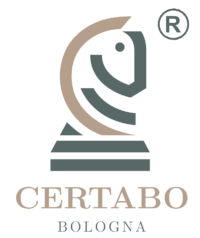Quote from
G4LLY on June 28, 2021, 9:36 am
Hello Bryan,
I had the same behaviour. If I remember properly you need to install the drivers of your screen. Mine was a waveshare one and here are the instructions. Of course you need to check your own brand/model:
https://www.waveshare.com/wiki/5inch_HDMI_LCD
specifically this part :
3) After the image has finished writing, open the config.txt file in the root directory of the TF card. Add the following code at the end of config.txt, then save and quit the TF card safely:
max_usb_current=1
hdmi_group=2
hdmi_mode=87
hdmi_cvt 800 480 60 6 0 0 0
hdmi_drive=1
Note: If you use the LCD with Raspberry Pi 4B, you also need to remove or comment out the line dtoverlay=vc4-fkms-V3D from config.txt file.
4) Connect the TF card to the Raspberry Pi, start the Raspberry Pi.The LCD will display after booting up, and then log in to the Raspberry Pi terminal (you can connect the Raspberry Pi to the HDMI display or log in remotely with SSH).
5) Then open the terminal of Raspberry Pi to install the touch driver which can be found in the /boot/ directory. Note: The Raspberry Pi must be connected to the network, or else the touch driver won't be successfully installed. The result is that a small area at the border cannot be touched. If you have installed the touch driver but without a network connection, how to solve the problem? See: #Touch screen calibration part.
git clone https://github.com/waveshare/LCD-show.git
cd LCD-show/
chmod +x LCD5-show
./LCD5-show
The touch function will work after restart. For ease of use, you can set the screen orientation, see: #Screen orientation settings.
Regards,
Hello Bryan,
I had the same behaviour. If I remember properly you need to install the drivers of your screen. Mine was a waveshare one and here are the instructions. Of course you need to check your own brand/model:
https://www.waveshare.com/wiki/5inch_HDMI_LCD
specifically this part :
3) After the image has finished writing, open the config.txt file in the root directory of the TF card. Add the following code at the end of config.txt, then save and quit the TF card safely:
max_usb_current=1
hdmi_group=2
hdmi_mode=87
hdmi_cvt 800 480 60 6 0 0 0
hdmi_drive=1
Note: If you use the LCD with Raspberry Pi 4B, you also need to remove or comment out the line dtoverlay=vc4-fkms-V3D from config.txt file.
4) Connect the TF card to the Raspberry Pi, start the Raspberry Pi.The LCD will display after booting up, and then log in to the Raspberry Pi terminal (you can connect the Raspberry Pi to the HDMI display or log in remotely with SSH).
5) Then open the terminal of Raspberry Pi to install the touch driver which can be found in the /boot/ directory. Note: The Raspberry Pi must be connected to the network, or else the touch driver won't be successfully installed. The result is that a small area at the border cannot be touched. If you have installed the touch driver but without a network connection, how to solve the problem? See: #Touch screen calibration part.
git clone https://github.com/waveshare/LCD-show.git
cd LCD-show/
chmod +x LCD5-show
./LCD5-show
The touch function will work after restart. For ease of use, you can set the screen orientation, see: #Screen orientation settings.
Regards,


